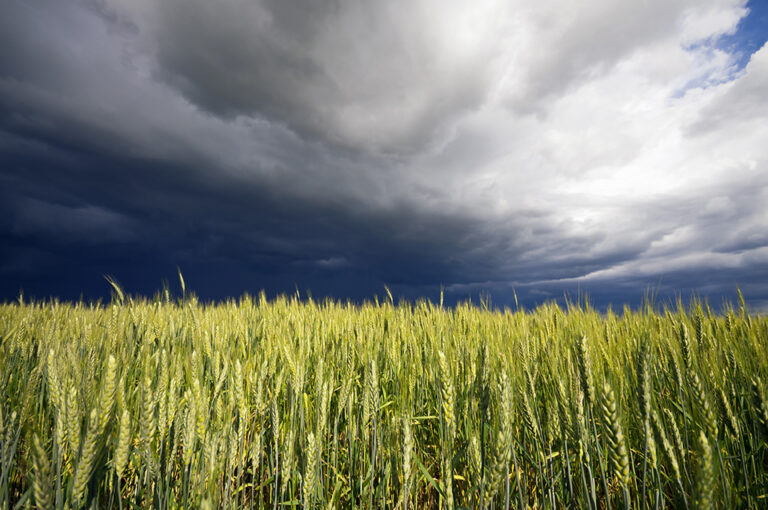Estimated 6.95 Million Illinois Corn Acres Were in Path of Destructive Storm

Tornadic supercell in the American plains
Mazon, Illinois, farmer Paul Jeschke already faces a harvest challenge this year when the Illinois River closes to transportation.
Add to that the loss of grain storage on his farm in Grundy County 75 miles southwest of Chicago in the northeast part of the state, and Jeschke is scrambling.
“We, along with I’m sure hundreds of other farmers across the Corn Belt, were severely hit by Monday’s storm,” he told DTN. “In our operation, we had three bins totally destroyed and three others severely damaged. That’s over half of our grain storage in a year when the Illinois River is closed during harvest.”
Jeschke is searching desperately for someone to repair or replace the bins.
“This is late in the season to try and order and build a bin before harvest, but we will be trying to do that,” he said. “We constructed two new bins to help hold the production that normally goes to market in the fall.
“But with the river being closed, we decided this was a good year to add to our storage. Well, one of those 60,000-bushel bins was totally destroyed and the other one of the damaged ones.”
Jeschke had insurance adjusters on his property on Thursday using drones to scout his corn and soybean fields.
“We see some fields where one-third of the field has patches of damage,” he said. “In other areas, it’s down bad, and some varieties are worse than others.”
Bean fields suffered very little damage, Jeschke said, but depending on the field, his corn crop may have 2% to 3% damage in some areas and 30% to 40% in others.
“The damage was a narrow stretch, about a 10-mile band here where we see bins gone,” Jeschke said. “A neighbor 4 miles to the south has a beautiful Morton building, and the roof is collapsed in a building full of machinery.”
According to three weather stations sitting about 5 feet above ground within 30 miles of his farm, he said wind gusts of 91 miles per hour to 93 mph were recorded on Monday.
“We’re still out of power here and at our neighbors,” Jeschke said. “We hope to have it back tomorrow or Saturday, but so far, we’ve spotted no trucks in the area.”
ILLINOIS COUNTIES HARD HIT
The storm hit wind speeds in Nebraska as high as 70 miles per hour Monday morning. Then, the storm, classified as a “derecho” by meteorologists, continued to pick up speed as it swept across much of Iowa, hitting 99 mph, and then reaching speeds of more than 100 mph once it reached a large swath of Illinois and Wisconsin by midafternoon.
When it was all said and done, the storm tracked 770 miles in 14 hours.
Jeschke’s farm sits sandwiched between Will and LaSalle counties in northeastern Illinois — some of the hardest-hit areas of the state.
According to analysis of DTN weather data and public crop production data by DTN’s weather team and Gro Intelligence, an estimated 6.95 million acres of Illinois corn with an implied production of about 1.39 billion bushels along with and 5.82 million acres of soybeans with an implied production of 360.49 million bushels lay in the path of the derecho.
That includes an estimated 823,600 acres of Illinois corn and 715,700 acres of soybeans in the five hardest-hit, wind-whipped counties.
The five counties with the highest average wind speeds recorded include Lee, LaSalle, Vermilion, Rock Island and Will — all in northern Illinois.
Lee County recorded the highest average wind speed at 92 mph, followed by LaSalle at 86 mph, Vermilion at 85 mph, Rock Island at 74 mph and Will at 69 mph.
According to the analysis, an implied 163.6 million bushels of corn and 44.4 million bushels of soybeans lay in the path of the derecho in those five Illinois counties.
INSURANCE CLAIMS POUR IN
Northern Illinois insurance company Country Financial told DTN that, as of Thursday afternoon, it had received 184 crop insurance claims from Monday’s storm. Of those, 93 were from wind damage and 91 from hail.
Chris Stroisch, public relations supervisor at Country Financial, said the company expects the numbers to increase as drone pilots, adjusters and clients continue to scout crops.
“The majority of these claims are located in the northern part of Illinois with pockets of minor damage scattered throughout the rest of the state,” Stroisch said.
“Separately, we have received nearly 5,000 property insurance claims in Illinois, Iowa, Wisconsin and Minnesota as a result of Monday’s derecho. A majority of the property insurance claims — over 3,000 claims — were reported in Illinois. Of those, 422 involved losses on farms.”
A majority of those were caused by wind damage to homes in Illinois, with nearly half of the claims occurring in the quad cities of Davenport and Bettendorf in southeastern Iowa, and Rock Island, Moline and East Moline in northwestern Illinois.
Monday’s derecho that ripped through Iowa causing potential damage to at least 10 million crop acres and millions of bushels in commercial and on-farm grain storage continued to hold much of its strength as it crossed the Illinois border.
“According to our field adjusters, damage is mostly light in nature with a few isolated areas with moderate damage,” Stroisch said.
Todd Neeley can be reached at todd.neeley@dtn.com
Follow him on Twitter @toddneeleyDTN
Source: Todd Neeley, DTN
